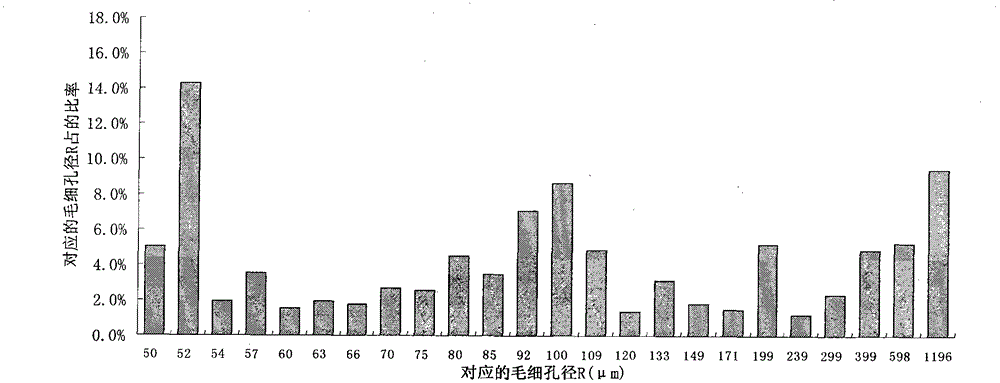Fraction gradient soaking and raffinate merging indication scissoring method for fabric aperture determination
A fractional gradient wetting and labeling method, which is applied to the analysis of suspensions and porous materials, measurement devices, permeability/surface area analysis, etc., can solve the problems of deviation and error without calculating the calculated pore size, and achieve accurate and comfortable The effect of fabric, reducing size error and solving technical bottleneck
- Summary
- Abstract
- Description
- Claims
- Application Information
AI Technical Summary
Problems solved by technology
Method used
Image
Examples
Embodiment 1
[0027] The gray cloth of 30 pure cotton woven fabrics with a longitude and latitude of 68×68 is used as a sample cloth, and three pieces are used for each group of tests, and the average value is obtained to obtain the final data. The greige was desized and air-dried using a liquor ratio of 1:30. The desizing formula is shown in Table 1.
[0028] Table 1
[0029]
[0030] The test temperature is 25°C±1°C, and the relative humidity is 65%±3% of the standard atmospheric pressure.
[0031] Experimental procedure
[0032] 1) Prepare three cloth strips with neat edges of 3cm wide and 20cm long.
[0033] 2) Hang the disassembled dry cloth sample in the device, clamp it with tension clips, and soak one end of the cloth in distilled water. Place in a constant temperature and humidity room for 24 hours.
[0034] 3) After the wicking is balanced, when the moisture absorption height of the cloth strip is at the equilibrium value, remove the wet cloth strip, and then draw obvious ...
Embodiment 2
[0047] All methods are the same as in Example 1, except that the sample cloth width is 1.5cm.
[0048] The experimental data are as follows
[0049] Among the three cloth samples, the average pore diameter of cloth sample 1 is 234 μm, that of cloth sample 2 is 238 μm, and that of cloth sample 3 is 242 μm.
[0050] The average pore diameter of the cloth sample is 238 μm±2.7 μm. The relative deviation is 1.1%.
PUM
| Property | Measurement | Unit |
|---|---|---|
| pore size | aaaaa | aaaaa |
| pore size | aaaaa | aaaaa |
| pore size | aaaaa | aaaaa |
Abstract
Description
Claims
Application Information
 Login to View More
Login to View More - R&D
- Intellectual Property
- Life Sciences
- Materials
- Tech Scout
- Unparalleled Data Quality
- Higher Quality Content
- 60% Fewer Hallucinations
Browse by: Latest US Patents, China's latest patents, Technical Efficacy Thesaurus, Application Domain, Technology Topic, Popular Technical Reports.
© 2025 PatSnap. All rights reserved.Legal|Privacy policy|Modern Slavery Act Transparency Statement|Sitemap|About US| Contact US: help@patsnap.com



